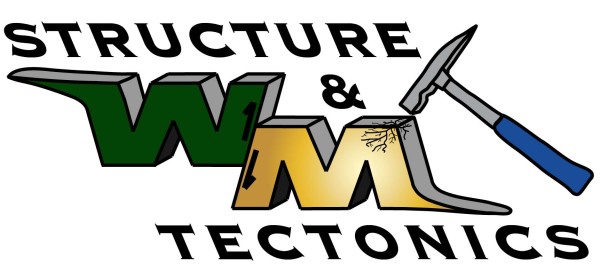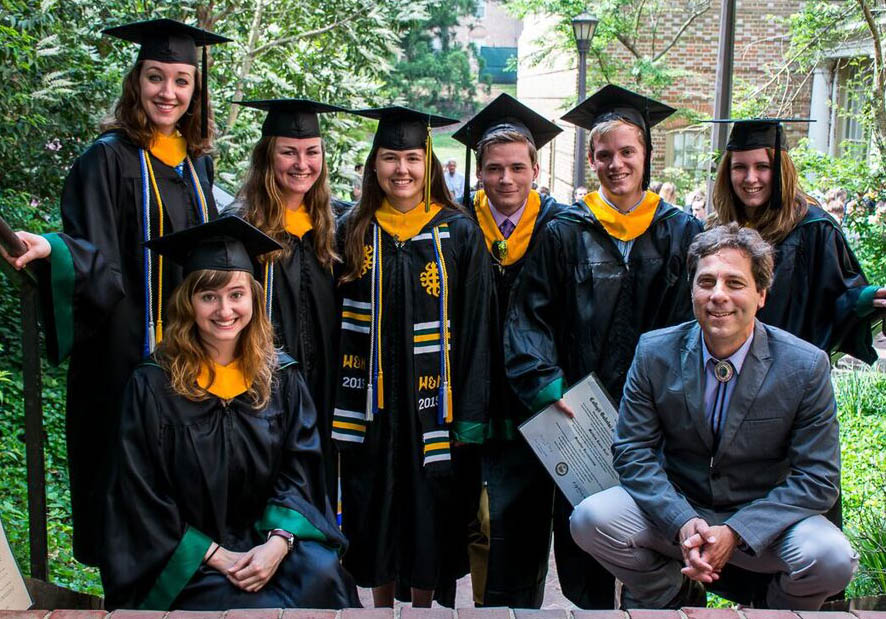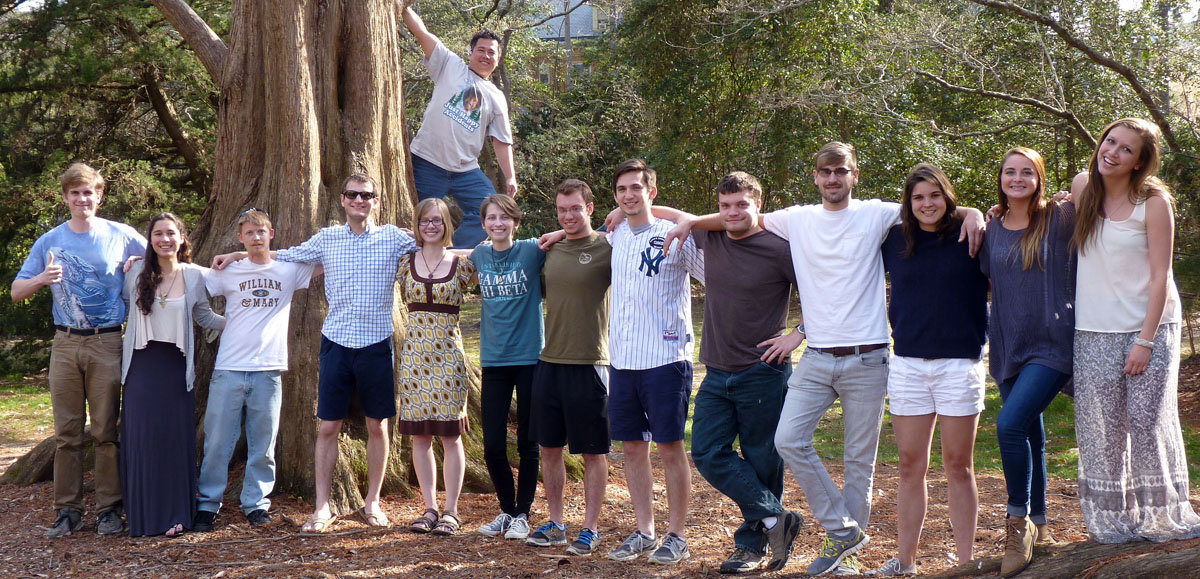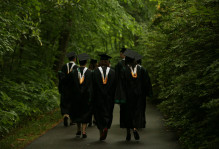Endings and Beginnings
William & Mary’s class of 2015 has graduated. On Sunday morning the Geology department held its graduation reception, and the mood was suitably festive as our latest cohort of seniors took possession of their diplomas.
As I noted in earlier posts, part of what makes a bachelor of science degree in Geology from William & Mary distinctive is that all our graduates complete a year-long (or more) independent research project – the senior thesis. This project results in oodles of new knowledge about the earth and the environment, all the while preparing our students for professional life beyond W&M.

One of the great joys in my job is collaborating with research students. Geology students who work with me are part of the Structure & Tectonics research group; a few years back we even designed our own group logo, it may not meet the College’s visual identity standards, but we’ve got the correct shades of green & gold, and are sticking with our iconic logo!
The 2015 Structure & Tectonics research group numbered seven, and their theses covered a wide swath of topics.

A winsome group – the 2015 W&M Structure & Tectonics research group. Clockwise from lower left: Anna Spears, Ciara Mills, Kelsey Watson, Megan Flansburg, Brady Coleman, Matthew Sniff, Heather Cameron, and Ol’ Man Bailey. Photo by Pablo Yañez.
Heather Cameron’s thesis, Analog modeling of structural deformation, involved an experimental approach to understanding crustal deformation – she’s off to Houston to start a job as a GIS analyst.
Brady Coleman’s research was not related to structure or tectonics, however as department Chair, I served as his on-campus advisor. Brady is a Powerpoint zenmaster and I’m delighted to have him in the group. He collaborated with scientists from Virginia Tech on his research, Nitrate and Phosphate Removal in a Biochar-Amended Denitrifying Bioreactor and presented the results at a Geological Society of America meeting in March. This fall Brady will commence graduate work Virginia Tech.
Megan Flansburg’s thesis was entitled- Priming for supereruption: the hot pre-Peach Spring Tuff lavas and the Peach Spring Tuff magmatic enclaves, Black Mountains, Arizona. She presented the results of this research at three separate professional meetings, garnering the best student poster award at the Geological Society of America’s annual meeting in Vancouver, British Columbia. Megan will remain with us in the department, and serve as the Geology Research fellow for the next academic year.
Ciara Mills’, one of the ringleaders of the Buckmarlson Banshees, thesis was entitled- A petrologic and structural analysis of metavolcanic rocks in the western Piedmont and eastern Blue Ridge provinces, central Virginia. She presented her work at a Geological Society of America meeting in March. She’ll continue her field research this summer and then is off to Indiana University for graduate study in geology.
Matthew Sniff’s research was a double-pronged approach involving modeling and fieldwork, his research was entitled- Quantifying and modeling mylonitization in the Hylas Fault Zone, Virginia. He presented a well-received talk at a Geological Society of America meeting in March. Matthew’s off on a storm-chasing project, and then will head to San Francisco, commencing work as a mobile software designer later in the year.
Anna Spears’, the other Buckmarlson Banshees‘ leader, senior research focused on the Geology of the Howardsville 7.5’ quadrangle, western Piedmont and eastern Blue Ridge provinces, central Virginia. She presented her research as a poster at a Geological Society of America meeting and at the Virginia Geological Research Symposium. Anna will lead our ongoing research efforts in central Virginia this summer.
Kelsey Watson’s thesis was entitled- Provenance of ballast stone used in early 17th century foundations at Jamestown, Virginia. While not exactly a structure or tectonics project per se, her research determined that early colonists brought a wealth of exotic rocks to Jamestown in the hold of their ships – these include porpyhritic andesite from the Caribbean, limestone from Bermuda, as well as sandstone, chalk, and chert from the south of England. Kelsey presented her results at both archaeology and geology conferences. She’ll work for Preservation Virginia at Jamestown this summer and, in the process, write up her findings for publication.
They are a talented bunch. I will miss them all.
As one research group’s William & Mary experience draws to an end, another research group begins its quest for knowledge. The W&M 2016 Structure & Tectonics group is massive, with 14 researchers at last count. They’ll be tackling an array of research topics; ranging from paleomagnetic analysis to fault rock formation to stream piracy with study areas from Virginia’s Blue Ridge Mountains to Oman, and even on distant Europa, orbiting mighty Jupiter.
I’m excited by their prospects. Check back for updates on our latest research adventures as the summer progresses.
Comments are currently closed. Comments are closed on all posts older than one year, and for those in our archive.



Will miss all of you – thanks for the memories, it was a good run!